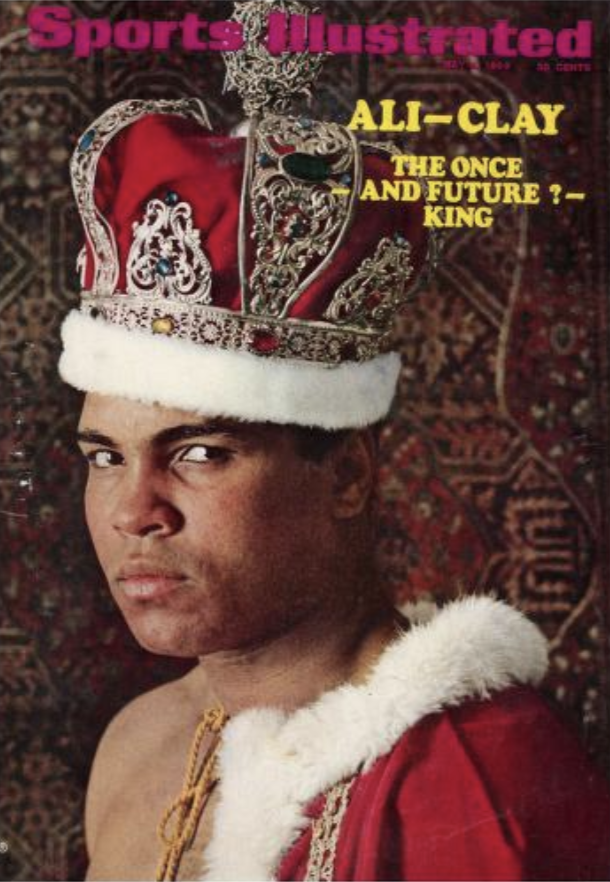‘Sports Illustrated’ Fall Could Lead to New Sports Journalism, Says Rodzvilla

When news broke that Sports Illustrated was going to lay off most of its staff, and may possibly shut down, it felt like a redux of previous headlines. But the reason for Sports Illustrated‘s failings is different than other recent closings of popular magazines and websites.
Sports Illustrated laid off people because its parenting company, Arena Group, failed to make a $3.75 million quarterly payment to Authentic Brands Group (ABG), the company that controls the Sports Illustrated brand license.
“It is weird,” said Writing, Literature & Publishing Assistant Professor John Rodzvilla. “It’s not about what the magazine is doing at all. It’s about someone didn’t pay a licensing fee. I don’t know of any other magazines that were shut down because of a licensing fee failure.”
Rodzvilla has worked in a variety of editorial, production, and subsidiary rights endeavors in publishing. He worked in the subsidiary rights department of the Perseus Books Group, where he licensed titles for translation in Eastern Europe, Asia, and Africa, and was part of the digital rights team that developed digital initiatives with Google, Amazon, Sony, and Microsoft.
Rodzvilla contrasted that to more common reasons for publications or websites ceasing operations, such as the Jezebel website being shut down by its parent company, or Entertainment Weekly stopping its print product.

The business side of publishing has changed, said Rodzvilla.
“There really is no more modern journalism companies. They’re all media companies. It’s not about journalism, it’s not about workers or the writers, it’s all about protection of the brand,” said Rodzvilla. “They’re not looking at it like, ‘We’re publishing this material.’”
Media companies now want to go public with an IPO – offer stock – and the stock always has to go up to satisfy shareholders. That leads to layoffs.
“At some point, you’re not getting more of an audience. Your advertising has flatlined. If anything, advertisers will pay less than a decade ago,” said Rodzvilla. “When you can’t bring in more income, the only way to look better on the balance sheet is to cut costs.”
No Longer Popular
In November 2023, Popular Science‘s parent company, Recurrent Ventures, announced it would stop publishing the title’s online magazine, three years after shuttering its print edition, which launched in 1872.
“Like most media companies, Recurrent is adapting to the evolving landscape of its audience,” Cathy Hebert, a company spokeswoman, said in a statement to The New York Times. “Whether it’s due to shifting patterns in social media, an increase in consumer demand for video or shifting advertising budgets — which have also increasingly moved toward video — it’s clear that change is a consistent theme.”
This is causing journalism to weaken, said Rodzvilla.
“Journalists not getting paid has always been the case. Now it’s, ‘We can’t pay you to do this in-depth research. We need content like this…’,” said Rodzvilla. “They want to see the ROI on [paying for] journalists researching an article by talking to 30 people and going on site. What’s the investment for that? ‘Uh, we might win an award.’”
And while historically popular and noteworthy publications such as Sports Illustrated, Popular Science, and Entertainment Weekly, have closed, laid off employees, or shut down, Rodzvilla provided a glass-half-full perspective with the old grove analogy.
“It’s a forest fire. It’s destroying the old grove. Media companies have ecologies,” said Rodzvilla. “Eventually big things collapse and there is the birth of smaller, newer things. It’s the new startup that’s covering sports in a different way.”
Rodzvilla said sports journalism has changed dramatically since Michael Jordan’s heyday of the 1990s. There were reporters following Jordan, writing in-depth articles because fans wanted to know all about the Chicago Bulls star.
“What does the 18-year-old sport fanatic want? They don’t need Sports Illustrated. They can hear from their favorite athletes on Twitter, on Instagram, and through TikTok videos. Sports Illustrated made sports stars into celebrities,” said Rodzvilla.
He added that we may still see Sports Illustrated, because the branding company will license it to another entity. Rodzvilla said one rumor is a company could license the Sports Illustrated brand for celebrity cruises where you can see your favorite star deck-side.
“But that’s not journalism. Let’s reimagine what Sports Illustrated can be for the 21st century,” said Rodzvilla. “What’s the next generation’s understanding of what sports journalism should be?”
Categories